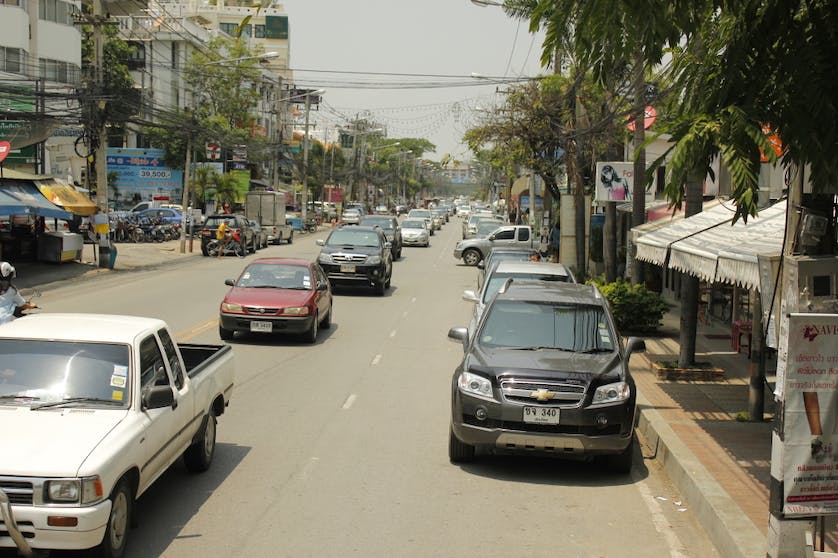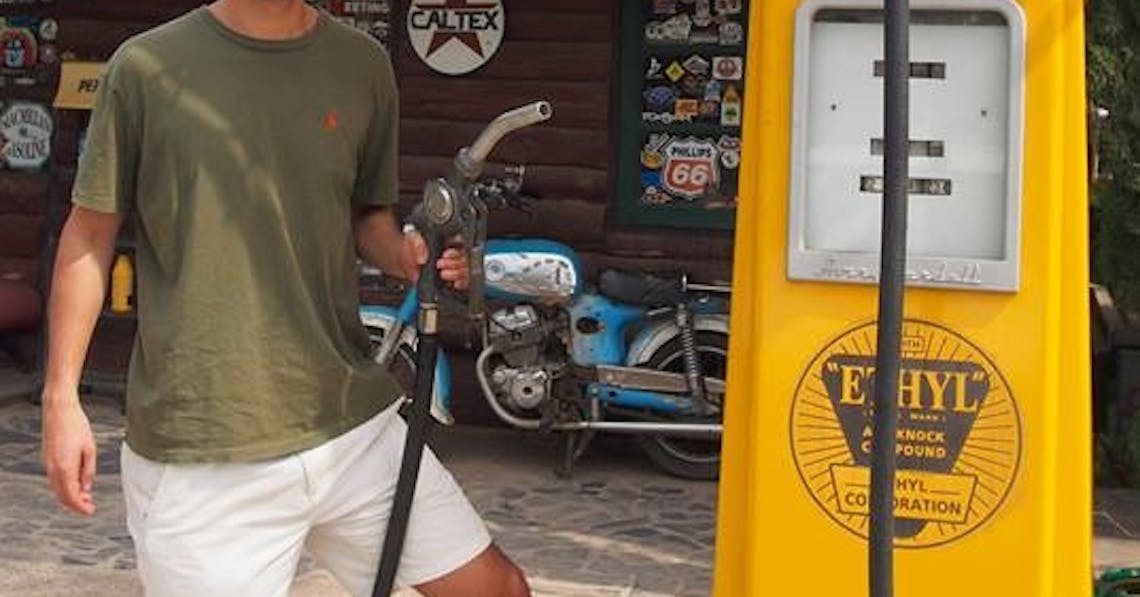Winding through the mountains with the windows up and AC cranked, I was on my way to Phetchabun with my Thai host family. After a long week of teaching, I was excited to take a weekend trip to Khao Kho in the mountains to see the lush strawberry fields and taste the sweet tamarind that Phetchabun is famous for this time of year. The mountains of Khao Kho were a nice change in altitude and scenery from the flat, dry winter landscape of Isaan, where I live. The reason for this well deserved break from the everyday grind was simple: petrol is cheap right now.
As you are probably aware, crude oil prices have plummeted since July of last year and are now at their lowest levels in over a decade. In June of 2014, the price per barrel on international markets was $108 USD (3,500 baht). This past January, it was trading for less than half of that at just over $47 USD (1,550 baht) a barrel.
A combination of plummeting global demand in places like Europe, increased production in the United States, and OPEC’s decision to continue current levels of oil production have led to this drastic decline in international oil prices.
For consumers like my Thai family, this simply means savings at the pump. Our weekend trip to Khao Kho, about 250 kilometres from Khon Kaen (and 450 km from Chiang Mai), was a last minute decision largely influenced by petrol prices.
In early February, we paid about 26 baht a litre for petrol, though the average price across Thailand was 34 baht per litre during this time. The cheap price of petrol was what spurred us into booking a guesthouse for the weekend and hopping in the car to enjoy the beauty of the Phetchabun Mountains.
We had no qualms driving from place to place, stopping at the site of an old battlefield where the Thai Communist Party and Thai Royal Army fought from the mid-1960s to mid-1980s. Or visiting Wat Pha Sorn Kaew, a temple famous in the province for its stunning mountain terrain and colourful ceramic adornments. What really struck me during the trip was how many tourists were visiting Khao Kho on this ordinary weekend in February. They were not your typical international tourists from Asia and the West, but were almost exclusively Thai.
Where did all of the cars come from?
The Thai government has spent the past 15 years promoting programmes to increase Thailand’s market share in the automobile industry. Through these programmes, the country has raised its automobile production from under 400,000 units in 2000 to 2.5 million units in 2013. That is a 525 percent increase (!) pushing Thailand to ninth place in global automobile production and number one in ASEAN.
Along with the increase in production, the government has pushed for an increase in domestic consumption. In 2012, the Thai government sponsored a controversial rebate programme for first time car buyers. A first time car buyer who bought a domestically-made automobile was awarded up to 100,000 baht back within a year of purchase. As a result, in 2012, automobile production increased 67 percent from the previous year due to the government subsidy.
While the programme may have been questionable in terms of environmental impact (among other things – we’ll get to that later), I personally benefited from it, as the car we drove to Phetchabun was one such vehicle purchased driven by the subsidy. Without it the trip would have most certainly been impossible.
For better or for worse, Thais have been encouraged to travel by personal vehicle due to the cheap petrol prices that did not exist six months ago. Which has led to something that is not new to Chiang Mai and Bangkok, but is spreading quickly across the country: traffic jams.
As petrol prices have continued to fall, Thai people now have fewer concerns about using vehicles for convenience and travel. The result is more time spent in traffic and drivers becoming frustrated with the increase in commute times. Like most of you, I too have noticed this as my commute to work gets longer and longer and it becomes more challenging to find a parking spot at Central Festival. The good news for consumers is savings at the pump; the bad news is an increase in traffic and commute times.
What about the environment?
If you have lived in a large Thai city during the dry season you have first-hand experience with the smog that peaks in February and March. This anecdotal evidence is supported by a 2014 Australia National Health and Medical Research Council study that links higher mortality rates to high levels of air pollution specifically during the winter and summer months.
According to a 2009 report from the Clean Air Initiative for Asian Cities (CAI-Asia) the major source of particulates comes from vehicles, re-suspended road and construction dust, and industry.
Vehicles are literally driving up the levels of particulate matter in the air and increased time spent in traffic is part of the problem. Bangkok ranks 6th in the world (as of 19/3/2015) on the CO2 Emission Index, which calculates the amount of carbon dioxide produced due to traffic time.
Government policies that have promoted the growth of car ownership coupled with the decrease in petrol prices has put more cars on the road. While it has become convenient and cheaper to drive personal vehicles the environmental and health costs may outweigh the savings at the pump.
It is evident that Thailand is coming to a crossroads in diminishing air quality that is a result of rapid industrialisation policies dating back to the 1980s.

The news of cheap petrol prices has been a big break to Thai businesses and transportation costs have steadily decreased. This translates into significant savings not only for consumers, but also for businesses as Thailand is ranked 19th in the world for its consumption of both petroleum and natural gas, according to the US Energy and Information Administration. This large demand for oil has led to Thailand becoming a net importer of oil, ranking 13th worldwide.
Unfortunately it seems petrol prices may have bottomed out in February at an average of $1.05 USD or 34.09 baht. The Thai government announced in January that it would reduce the subsidies on imported liquid petroleum petrol (LPG) and natural gas for vehicles (NGV) by a third starting February 2nd in order to better reflect the true market price. This has come in part as a way to recoup the losses of the state-controlled PPT PCL, the nation’s only petrol supplier. This will not only help the PPT cut its projected losses for the year, but also free up government funds that have been used to subsidise imported oil in the past.
What does it mean for consumers?
Consumers can already see the effects of the policy as prices have increased from their low in February. The savings are still significant as fuel costs have declined and will remain lower than in July of 2014. But with the easing of petroleum and natural gas subsidies, prices will continue to rise for consumers in the coming weeks.
My Thai family and I have plans to travel in the coming months as long as prices remain fair. We have caught the travel bug and plan on enjoying the sights that Thailand has to offer. The questions that arise are: how high will prices go, will fuel costs stay low enough for the average consumer to travel, and what are the real environmental and health costs of cheap petrol?
